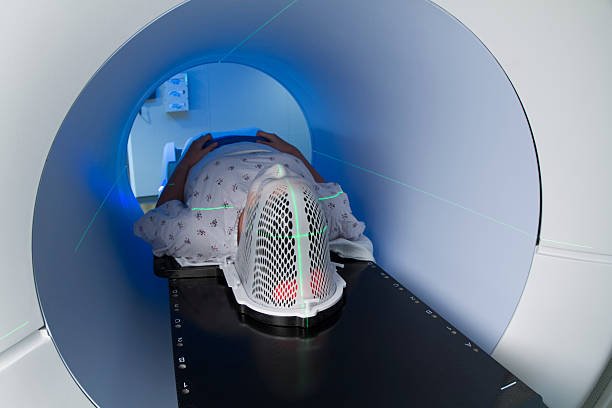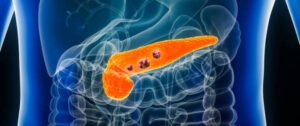
Head and Neck Cancer Symptoms? Head and Neck Cancer Survival Rate, Terminal Symptoms Revealed! Detailed Explanation of Causes and Sequelae of Treatment
The head and neck contain many organs, such as the upper respiratory tract and upper gastrointestinal tract, and have important functions such as breathing, vocalization, and swallowing. If you suffer from head and neck cancer, the tumor may affect your appearance or make your speech unclear, affecting your daily life. Starting from the structure of the head and neck, we will take you to understand the types, causes and treatments of head and neck cancer.
Head and neck structure
The structure of the head and neck is divided into the following 6 parts according to location:
- Nasal cavity:
The nasal cavity is the starting point of the normal respiratory tract. In addition to being a passage for gases, it also has functions of filtering dust and regulating temperature. It can also humidify the air so that it will not be too cold or too dry when it enters the lungs. It is a preventive measure for the human respiratory tract. The first line of defense against infection. - Pharynx:
It is divided into 3 parts from top to bottom: nasopharynx, oropharynx, and hypopharynx. The nasopharynx is located at the uppermost end of the throat, behind the nasal cavity; the oropharynx includes the soft palate and the tonsils behind the base of the tongue; the hypopharynx is the part that connects the oropharynx and the esophagus. - Larynx:
The larynx functions as a part of the respiratory tract, protects the respiratory tract, and assists in swallowing and vocalization. - Oral cavity:
The most important functions of the oral cavity are feeding and speaking. Those related to feeding can be divided into chewing and swallowing. It can also be used as a backup respiratory tract. - Neck:
The neck is an important channel connecting the head and the trunk. It contains many muscle bundles with different functions, allowing the neck to move flexibly. - Salivary glands:
Salivary glands are one of the structures of the neck in terms of location, and are appendages of the oral cavity in terms of function.

Types and symptoms of head and neck cancer
Head and neck cancer can be divided into the following five types according to the primary site of the cancer:
- Oral Cancer
- Nasopharyngeal cancer
- Oropharyngeal cancer
- Hypopharyngeal cancer
- Throat cancer
More than 90% of head and neck cancers are squamous epithelial cancers; according to statistics, more than 75% of head and neck cancer patients have the habit of smoking and drinking; smoking and drinking have been proven to cause head and neck cancer.
The symptoms of head and neck cancer will vary depending on the location. They are explained below:
- Oral cancer symptoms
- Unhealing red or white ulcers on the gums, tongue, and lining of the mouth
- Swollen chin
- Abnormal bleeding or unexplained pain in the mouth
- A lump appears in the mouth
- Dentures that originally caused no pain appear uncomfortable.
- Unhealing red or white ulcers on the gums, tongue, and lining of the mouth
- Nasopharyngeal cancer symptoms
- Sinusitis
- Sinus infection that does not respond to antibiotic treatment
- Nosebleed
- Headache
- Pain and swelling around the eyes
- Upper tooth pain
- Dentures that originally caused no pain appear uncomfortable.
- Sinusitis
- Oropharyngeal cancer symptoms
- Sore throat
- Foreign body sensation in throat
- Hard to swallow
- Dysarthria
- Transferred ear pain
- Bleeding
- Trismus
- Sore throat
- Hypopharyngeal cancer symptoms
- Difficulty breathing
- Unable to speak
- A lump appears in the throat
- Difficulty chewing or swallowing
- A stuck feeling in the throat
- Chronic sore throat
- Earache, tinnitus, or hearing loss
- Difficulty breathing
- Throat cancer symptoms
- Painful swallowing
- Ear pain
3 major causes of head and neck cancer
- Lifestyle habits:
Smoking, drinking, and chewing betel nut will increase the risk of head and neck cancer. - Disease infection:
Oropharyngeal cancer and oral cancer and other diseases are related to human papillomavirus (HPV) infection. - Exposure to chemicals:
Construction, textile, logging, food processing and other industries are exposed to wood chips, formaldehyde, asbestos, nickel and other substances, which can increase the risk of head and neck cancer.
How is head and neck cancer treated?
Treatment for head and neck cancer includes surgical resection, radiation therapy, chemotherapy, targeted therapy, and combination therapy. However, the choice of treatment method depends on the type of cancer the patient has and the severity of the disease. Generally speaking, if the disease is detected early and the patient is in good health, the tumor is usually removed surgically or combined with radiation therapy to remove the remaining tumor. If it is judged that surgery is not possible, radiation combined with chemotherapy will be used to control tumor growth.
In addition, depending on the patient’s clinical stage and tumor location, doctors may also need to perform lymph node dissection to prevent the tumor from spreading to the lymph nodes and increase the difficulty of treatment. In principle, the treatment of head and neck cancer should preserve the patient’s original organ function as much as possible. If the patient has developed distant metastasis, it will be changed to palliative treatment that focuses on the patient’s quality of life.
Sequelae of surgery
The scope of the removed cancer cells affects chewing and swallowing functions, difficulty opening the mouth, neck stiffness/difficulty turning, shoulder muscle atrophy, shoulder joint stiffness and pain, difficulty lifting the arms, lymphedema of the face and jaw, changes in facial appearance, etc.
Sequelae of radiation therapy
- Acute phase:
changes in taste, catarrh, dermatitis, dry mouth. - Chronic stage:
dry mouth, neck soft tissue fibrosis, difficulty opening the mouth, temporomandibular joint fibrosis, dysphagia, etc.

Sequelae of chemotherapy
Nausea, vomiting, loss of appetite, fatigue, hair loss, neuropathy (numbness in feet and hands, muscle weakness), etc.

Head and Neck Cancer Survival Rate
Patients with early-stage head and neck cancer can be treated with surgical resection or radiotherapy alone, and their recovery conditions are better after treatment. The survival rate is 80-90% for patients in the first stage and 60-80% for patients in the second stage; while for patients with advanced stages, the survival rate is 80-90%. Head and neck cancer patients must be treated with a combination of surgical resection and radiotherapy. Some patients with a high risk of recurrence must be treated with a combination of surgical resection, radiotherapy and chemotherapy.












